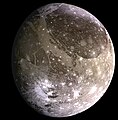Ficheiro:The Galilean satellites (the four largest moons of Jupiter).tif

Dimensões desta antevisão em JPG do ficheiro TIF: 800 × 262 píxeis Outras resoluções: 320 × 105 píxeis | 640 × 210 píxeis.
Imagem numa resolução maior (1 830 × 600 píxeis, tamanho: 1,51 MB, tipo MIME: image/tiff)
Histórico do ficheiro
Clique uma data e hora para ver o ficheiro tal como ele se encontrava nessa altura.
| Data e hora | Miniatura | Dimensões | Utilizador | Comentário | |
|---|---|---|---|---|---|
| atual | 12h54min de 29 de dezembro de 2011 | 1 830 × 600 (1,51 MB) | Prof. Professorson | {{Information |Description=This composite includes the four largest moons of en:Jupiter which are known as the Galilean satellites. The Galilean satellites were first seen by the Italian astronomer en:Galileo Galilei in |
Utilização local do ficheiro
As seguintes 2 páginas usam este ficheiro:
Utilização global do ficheiro
As seguintes wikis usam este ficheiro:
- af.wikipedia.org
- als.wikipedia.org
- ar.wikipedia.org
- ast.wikipedia.org
- az.wikipedia.org
- ba.wikibooks.org
- be-tarask.wikipedia.org
- be.wikipedia.org
- bg.wikipedia.org
- bn.wikipedia.org
- bn.wikibooks.org
- bs.wikibooks.org
- ca.wikipedia.org
- cs.wikipedia.org
- en.wikipedia.org
- en.wikibooks.org
- es.wikipedia.org
- et.wikipedia.org
- eu.wikipedia.org
- fi.wikipedia.org
- fr.wikipedia.org
- gl.wikipedia.org
- he.wikipedia.org
- hi.wikipedia.org
- hu.wikipedia.org
- hy.wikipedia.org
- id.wikipedia.org
- it.wikipedia.org
- ja.wikipedia.org
- kk.wikipedia.org
- ko.wikipedia.org
Ver mais utilizações globais deste ficheiro.





